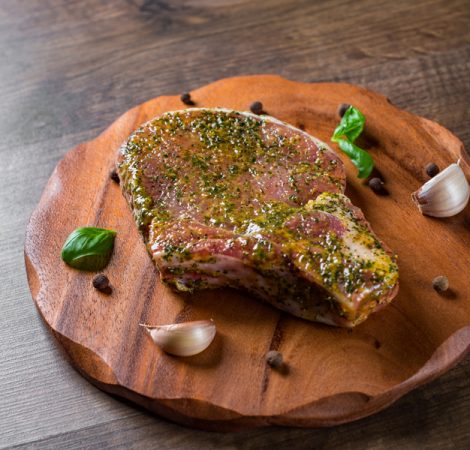
Focus on Food Safety: Variables to consider when creating fully cooked foods
By Ron Wasik
Food Safety Meat &Poultry meat processing The marinating process increases a product's microbial load. Photo © pavel siamionov / Adobe Stock
The marinating process increases a product's microbial load. Photo © pavel siamionov / Adobe Stock I recently received a few inquiries from aspiring processors planning to market fully cooked foods. The inquiries brought to mind the many variables one has to consider in preparing fully cooked dishes.
Product
Size and shape: It takes longer to heat a larger and thicker product than light and uniform one.
Variability: The more variability of size, shape and composition within a batch or product, the greater the challenge to establish the safest and best conditions to fully cook the food.
Most foods are not homogeneous throughout like hot dogs. Natural products usually vary in makeup from one end to the other, and this will impact the rate of heat penetration.
Coatings: Coatings affect the rate at which change takes place within a product during heating, cooling and dehydration. The coating’s composition and the uniformity of the coating on the product must be taken into consideration.
Marinade quantity: Introducing a marinade into a product adds to the product’s mass and slows the rate of heating and cooling. Certain ingredients like phosphates, if present at high levels, inhibit denaturing of blood in bone-in poultry pieces. As a result, meat will appear uncooked even when the pieces have been heated to an internal temperature of 100 C or more. The process of marinating also adds to the microbial load inside and on the surface of a product. The older the marinade, the higher the bacterial load. Other things to consider are the pH and ionic strength of the marinade, which can affect food safety as well as quality.
Quality of the raw materials: As a rule-of-thumb, if it’s “garbage in,” then it’s “garbage out,” which means poor quality raw materials end up producing lower quality and, potentially, unsafe products. An often-overlooked factor is the age of raw food. Older raw foods have higher microbial loads and very different chemistries from their fresh counterparts. This affects both quality and food safety.
The cooking process
Mode of cooking: Products can be heated by convection, conduction and radiation. In convection, products are cooked using forced-air ovens employing either dry or humidified air to transfer the heat energy to the product and to take away excess moisture. Conduction cooking transfers thermal energy to the product by making direct contact with either the product or its container. Radiation introduces heat energy via electromagnetic means. All of these cooking methods need to be managed carefully to produce consistently safe, high quality products.
Belt loading: The upside of squeezing more product on the oven belt is that it increases throughput, but the downside is that the rate of heating and the uniformity of heat penetration are reduced.
Heating control: Both the quality and food safety of the product are affected by the rate at which energy is delivered to the product. Better controls result in safer, higher quality products.
Balancing act
Processors not only have to assess food safety risks and how best to mitigate them, but also consider how all the variables and mitigation measures affect the product’s quality, shelf life and the bottom line. It’s a balancing act.
 Dr. R.J. (Ron) Wasik, PhD, MBA, CFS, is president of RJW Consulting Canada. Contact him at rwasik@rjwconsultingcanada.com.
Dr. R.J. (Ron) Wasik, PhD, MBA, CFS, is president of RJW Consulting Canada. Contact him at rwasik@rjwconsultingcanada.com.
This article was originally published in the June 2021 issue of Food in Canada.
Print this page